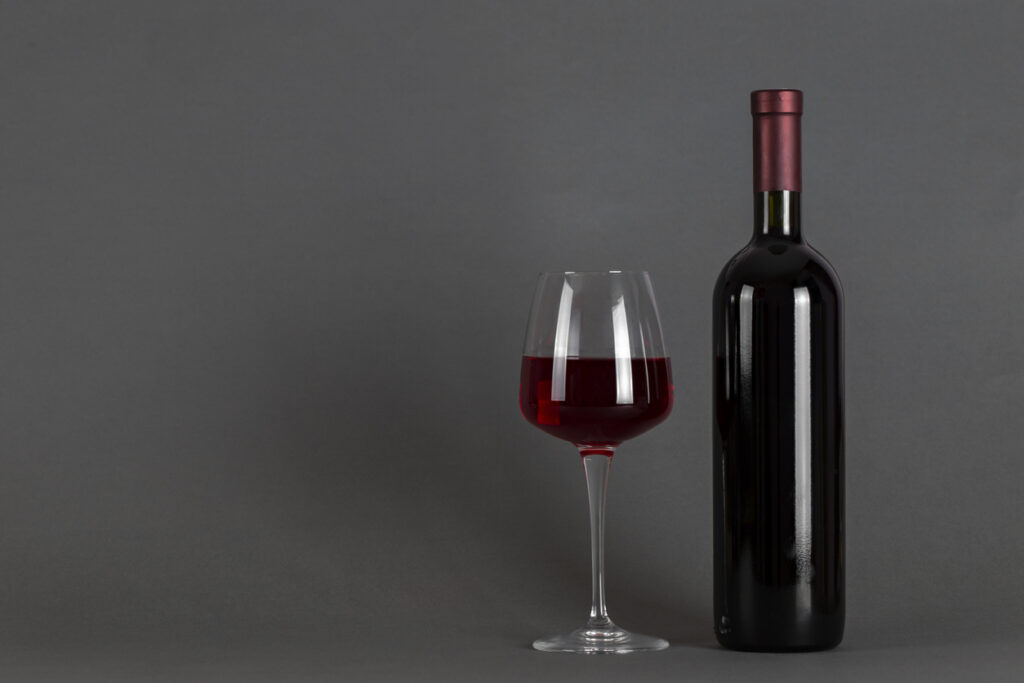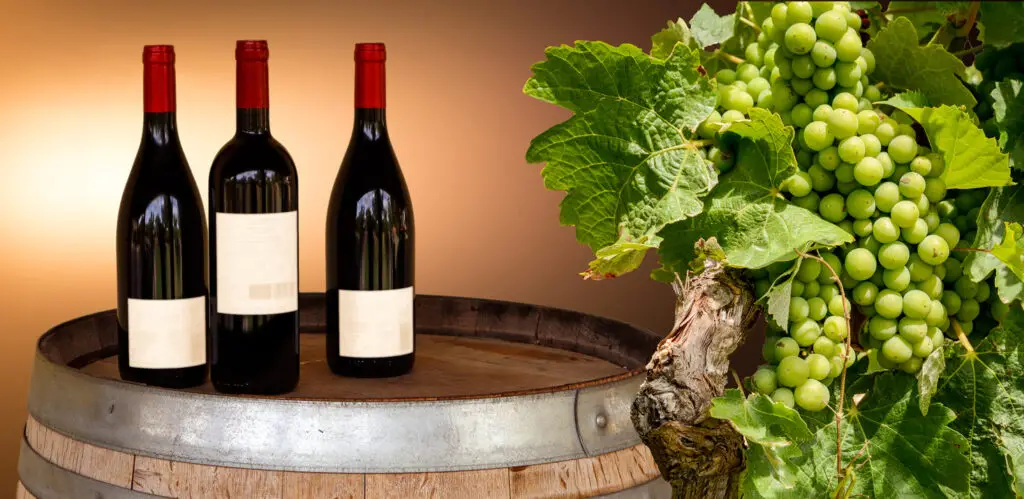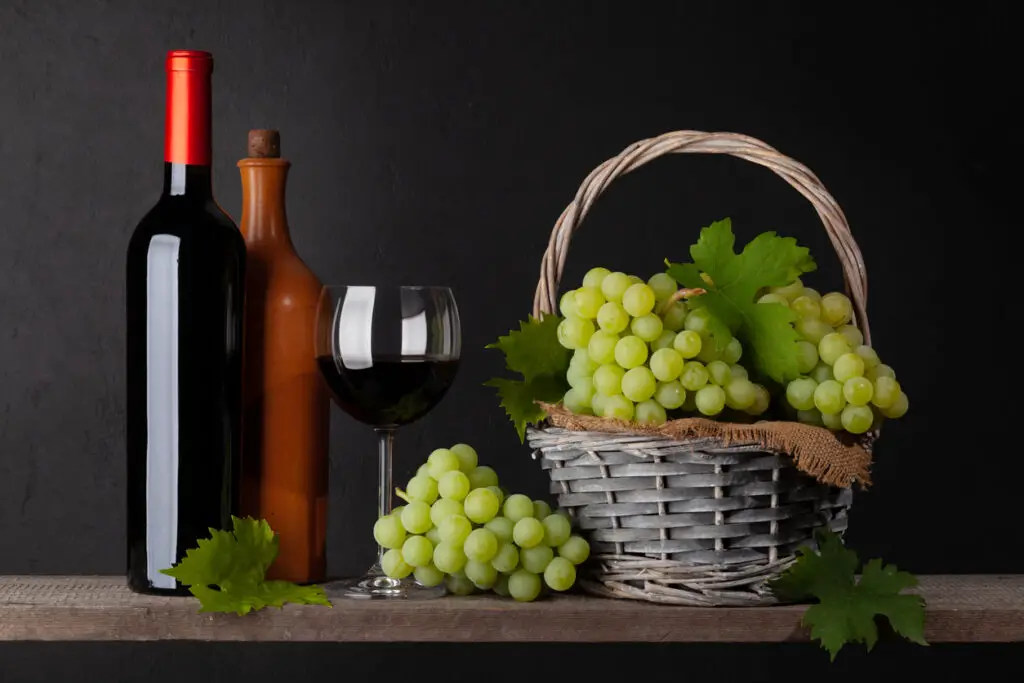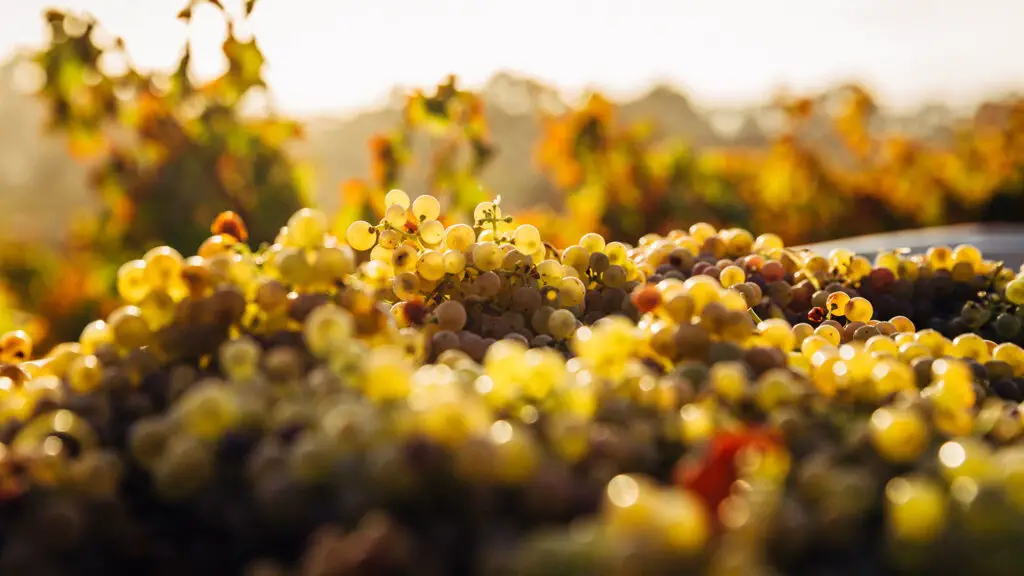Look at the self in a wine shop and you’ll notice wine seems to come in a wide array of colors – variations of red, white, pink, and even orange. Wine is more than its hue. Since everyone’s palate is unique they may prefer very different flavors of wine than their drinking partner. You may know that red wine comes from red grapes and white wine from white or green grapes. White wine can also be made with red grapes or a combination. But can you make red wine from white grapes?
The quick answer is that red wine cannot be made with only white grapes because it receives its color from the grape’s skin that comes in contact with the juice during winemaking. Without the darker pigment in red grape skins, white grapes will only produce light-colored wine.
The great news is that wines can offer many different combinations of flavors and aromas. You can gain an idea of what a wine will taste like by its color. The type of grape and winemaking process dictates how the wine looks and tastes in your glass.
Let’s take a look at how wine is made and what determines its color.
A Recipe for Enjoyment

Wine is made with special grapes that are smaller and sweeter than your typical table grape. They are grown so that they have more concentrated flavors that can be maintained through the rigorous winemaking process, called vinification.
Author Note: After harvested, grapes are pressed to release their juice. Then the juice, called must, goes through one or more fermentation processes in large vats or tanks. Naturally present or added yeast gobbles up the grapes’ sugar converting it into alcohol and carbon dioxide.
Unless sparkling wine is being made the carbon dioxide is released from the mixture. Sometimes additional yeast and sugar are added during a second fermentation. The chemical reactions that occur during fermentation affect how a wine will taste and smell.
Juice from every color of grape is around a faint yellow shade. During fermentation, red wine is allowed time to sit in contact with its skin which is what gives it its red hue. If red grapes are not introduced to the process the juice cannot absorb the red color.
Before a wine is bottled it is filtered to remove sediment. These days each step of vinification can be administered in many ways that give winemakers the ability to determine how the final wine ends up.
Winemakers vary which techniques are added or removed, the length of time, and the order of each step. The goal is to create a balanced wine that complements wines key elements of sweetness, acidity, tannin, alcohol, and body.
Grape skins and play the first step in establishing not only the wine’s color but also contributes to how it will taste. They contain tannin and flavanols that bestow the rich savory flavors of red wine. Because white wines are not fermented with skins they tend to taste snappy and fresh.
How is Red Wine Made?

Red wine grapes range from black to light red like Pinot Noir, Cabernet Sauvignon, Petit Verdot, and Merlot. As we mentioned red wine gets its color from skin contact.
Sometimes white grapes are blended with red grapes to make red wine. A blend of white Viognier and red Syrah grapes produce a wine blend with a red hue.
Bunches of grapes are smashed to release their juice. It is not filtered and all the parts are transferred to large tanks. The grape juice, skins, and seeds are fermented to allow sugar to turn into alcohol.
Skins will form a cap at the top of the tank that has to be blended back into the juice at least once a day. Chemical reactions during this time speed up the extraction from the skin.
When this is complete the solution is put through a winepress to remove what solids remain from the juice.
Top Tip: Red wine is usually aged in oak barrels for a few months or even years. Some exceptions are made for red grapes that have delicate floral aromas that need to be protected in steel vats.
There are different types of oak used to make wine barrels that add a variety of textures and flavors to the wine. They often add bold spice like coconut and vanilla to a wine.
During aging a malo-lactic fermentation takes place. Sour malic acid is converted to creamier lactic acid.
While leaving an appropriate amount of tannin, the wine is filtered to remove unwanted sediment and bottled. Tannin gives wine bold textures and flavors while supplying healthy compounds like antioxidants.
How is White Wine Made?
You probably realize that the skin of white wine grapes is not white. Visit a vineyard and you will find yellow to green grapes. Sauvignon Blanc, Chardonnay, and Pinto Gris are popular white wine varietals.
White wine can be made from red grapes or a mixture of both. This is a fairly common practice. For example, White zinfandel is made from red grapes.
French Champaign is made from chardonnay(white), pinot noir (red), and Pinot Meunier (red). It is called ‘Blanc de Noir’ which means ‘white from black.’
If red grapes are used the grape skins are filtered out right after pressing to release only the yellow juice into fermentation.
The clear juice is transferred to stainless steel tanks for fermentation. White wine fermentation is usually at lower temperatures than red wines preserving bright fruit flavors. Here the grape sugars are converted into alcohol.
Some whites, like many chardonnays, are moved to oak barrels go through malo-lactic fermentation. This imparts flavors like nuts, vanilla, and creaminess. People often describe this as buttery.
The resulting wine is filtered one last time and bottled. White wines are not as stable as red wines so winemakers often add more sulfites to them for protection. Sulfur preserves wine killing unwanted yeast and bacteria.
While sulfite use is required on many labels the amount in wine is usually far less than dried foods. Contrary to what many think, the amount of sulfites in wine is usually not what gives you a headache.
Other Wine Varieties

You are probably familiar with Rose, but there are other less common types like an orange wine.
Author Note: Rose, sometimes called blush sits comfortably in the middle. It gets its pink color from red grapes but is so light because it is only allowed to sit with the red grape skins for a short time.
Orange wine doesn’t mean juice or food color has been added to a wine. This is when white grapes are allowed to ferment with their skin and seeds. The skins tint the wine slightly resulting in an orangey color close to amber yellow.
Conclusion
The ever-increasing methods of creating wine make figuring out how a wine started confusing. White wine can be made with red or white grapes. Some reds have white grapes blended in with their red grapes. How do we keep it all straight?
The truth is there are a lot of ways to make different color wine. Almost any combination is possible except that red wine cannot be made by only using white grapes. It will not have any red pigment to give it color.
Each time you purchase wine grab a new type. Look online and learn one new thing each time. There is always more to learn about the exciting world of wine. We hope you enjoy your journey with wine.
To living a full-bodied life,
Wesley

